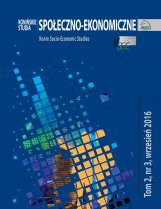Niektóre czynniki wzrostu gospodarczego RFN w okresie
„cudu gospodarczego” po II wojnie światowej (1950-1970)
Selected factors of economic growth in the Federal Republic of Germany in the period of the post-war “economic miracle” (1950-1970)
Author(s): Zbigniew KlimiukSubject(s): National Economy, Economic history, Post-War period (1950 - 1989)
Published by: Akademia Nauk Stosowanych w Koninie
Keywords: economy of FRG; West Germany’s “economic miracle”; factors in economic growth; international trade; foreign capital; public aid; private aid;
Summary/Abstract: In the first decades of its existence, West Germany experienced impressive economic performance. Powered by export-led growth and close collaboration among business, government and labor, the Federal Republic of Germany (FRG) was hailed as an “economic miracle” (Wirtschaftswunder), as it averaged 8.2% growth rates during the 1950s, 4.4% in the 1960s, and 2.8% in the 1970s. Various data illustrate the growing role of exports in Germany’s economy. In 1950, exports represented 9.3% of GDP. Once the postwar economic boom got under way, exports rose to 17.2% of GDP in 1960. The rise continued to 23.8% in 1970. The article deals with the relationships between economic growth in the FRG in the period of post-war “economic miracle” on the one hand and the economic policy of this country's government on the other. The author attempts to prove the thesis that West Germany’s rate of economic growth was fundamentally influenced by both the economic policy in the espoused framework of social market economy and by the external – mainly US founded – financial and technological assistance.
Journal: Konińskie Studia Społeczno-Ekonomiczne
- Issue Year: 1/2015
- Issue No: 4
- Page Range: 415-440
- Page Count: 26
- Language: Polish

